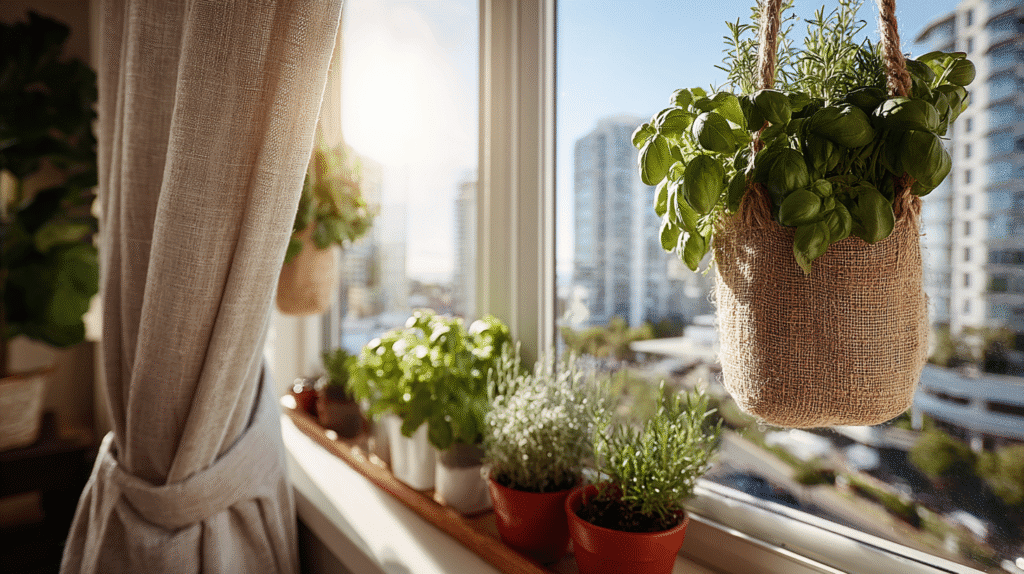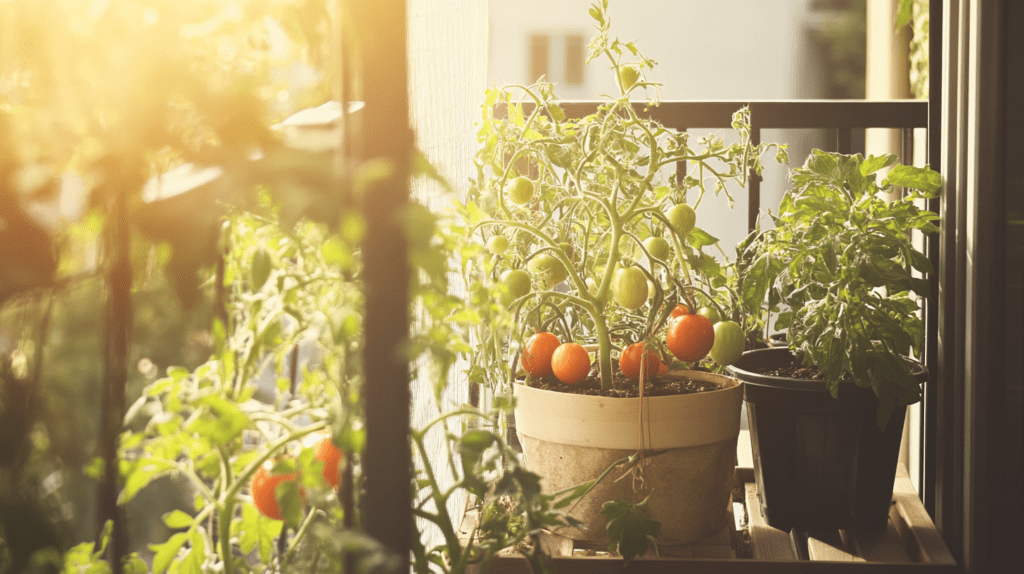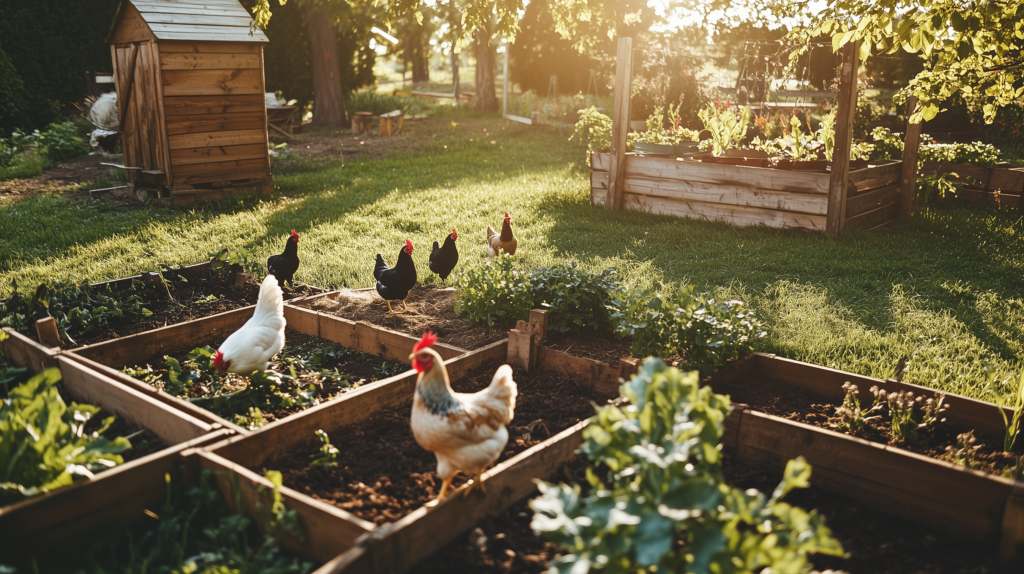This post may contain affiliate links, including those from Amazon Associates. If you make a purchase through these links, I may earn a commission at no additional cost to you. Learn more about our affiliate policy.
Each year when autumn arrives, the days shorten, and the air turns crisp, I feel an instinctive pull to tend and prepare.
While traditional gardening slows outdoors, the season offers a perfect moment to bring nature indoors.
Herbs have always been my favorite entry point for indoor gardening, especially during fall and winter when fresh greens become scarce and nourishing meals feel most important.
Like you, I’ve lived in small apartments, where large gardens aren’t possible, and the idea of urban self-sufficiency feels limited by walls and windows.
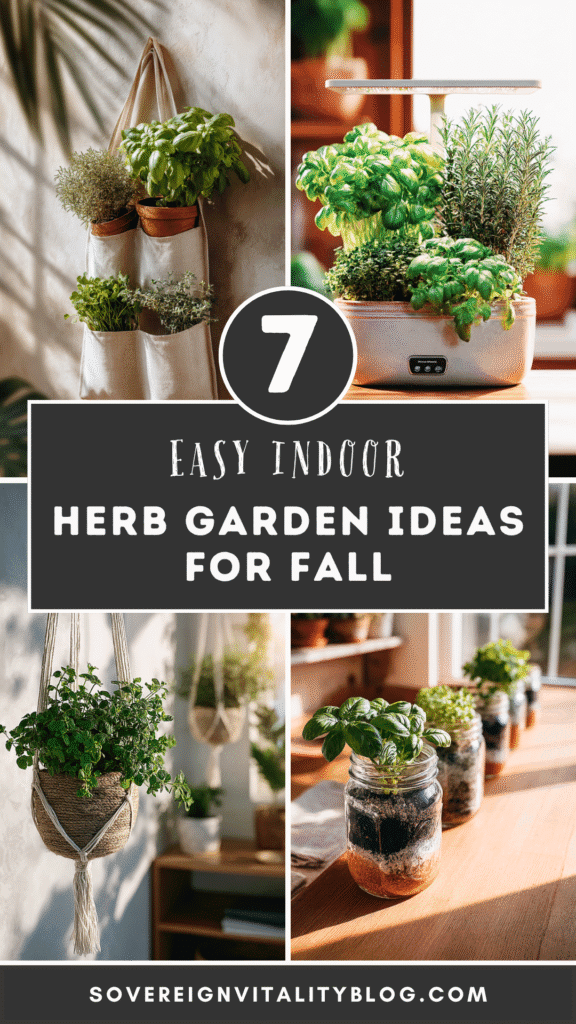
But I’ve learned, through trial and triumph, that creating a thriving indoor herb garden is not only possible, it’s practical, rewarding, and deeply fulfilling.
If you’re feeling the seasonal pull toward self-sufficiency and freshness but aren’t sure where to begin, here are seven approachable, practical indoor herb garden ideas that fit perfectly into small apartments and busy lives.
1. Windowsill Herb Jars for Beginners
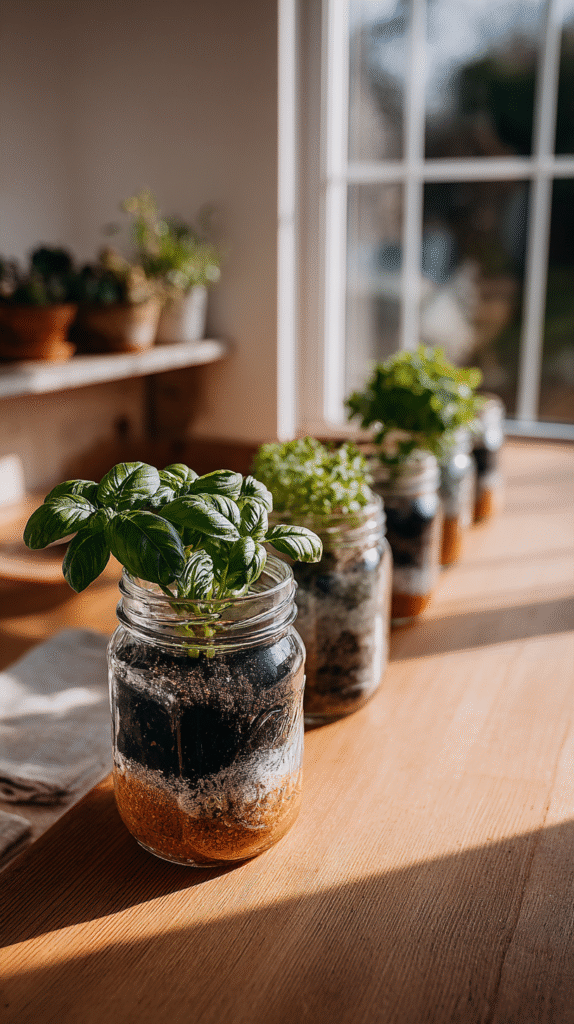
When I first began my indoor gardening journey, simplicity was key. Mason jars and recycled glass containers made the perfect beginner setup: affordable, readily available, and visually appealing.
To get started:
- Choose small jars and layer pebbles or small stones at the bottom for drainage.
- Fill jars with rich, organic potting soil and plant herbs like basil, parsley, or chives.
- Place jars on south-facing windowsills, turning them every few days to ensure even growth.
This easy setup is not only practical, it also adds vibrant greenery to your kitchen. Snipping fresh herbs directly from the windowsill feels grounding and adds immediate freshness to meals.
2. Hanging Herb Baskets in Sunny Corners
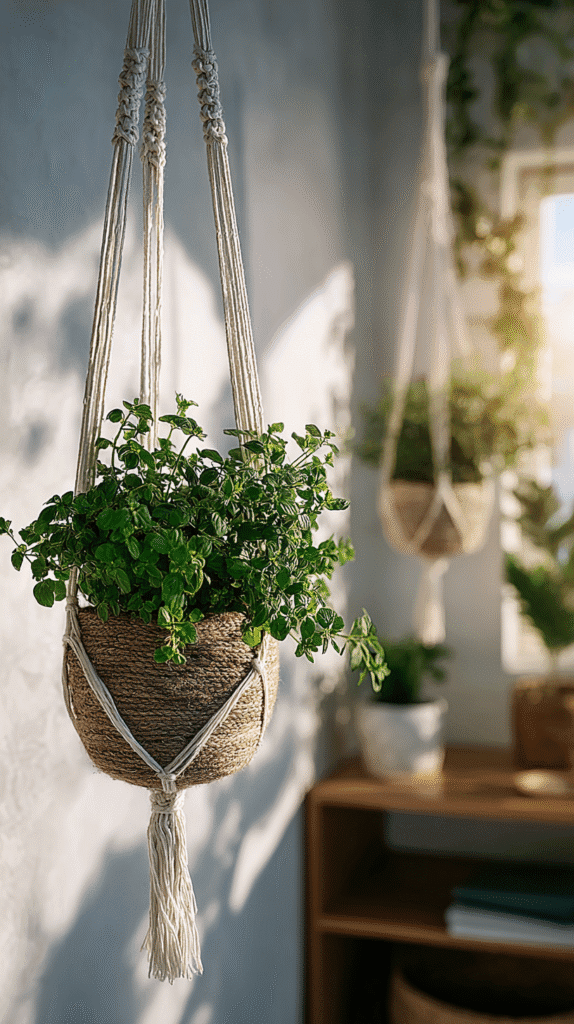
If counter space is scarce, try looking upward. Vertical gardening makes the most of your apartment, turning forgotten corners into productive space.
Here’s how to set up your hanging herb baskets easily:
- Pick lightweight baskets or containers, and plant sturdy herbs like thyme, oregano, or mint.
- Use macramé hangers or simple wall hooks—even command hooks if you’re renting.
- Water carefully, as hanging baskets can dry out quickly; consistent but moderate watering is key.
Mint, in particular, thrives independently, so give it its own basket to prevent it from overtaking other herbs. The visual impact of a vibrant hanging garden is immensely satisfying, especially on gray winter days.
3. Countertop Herb Gardens with Grow Lights
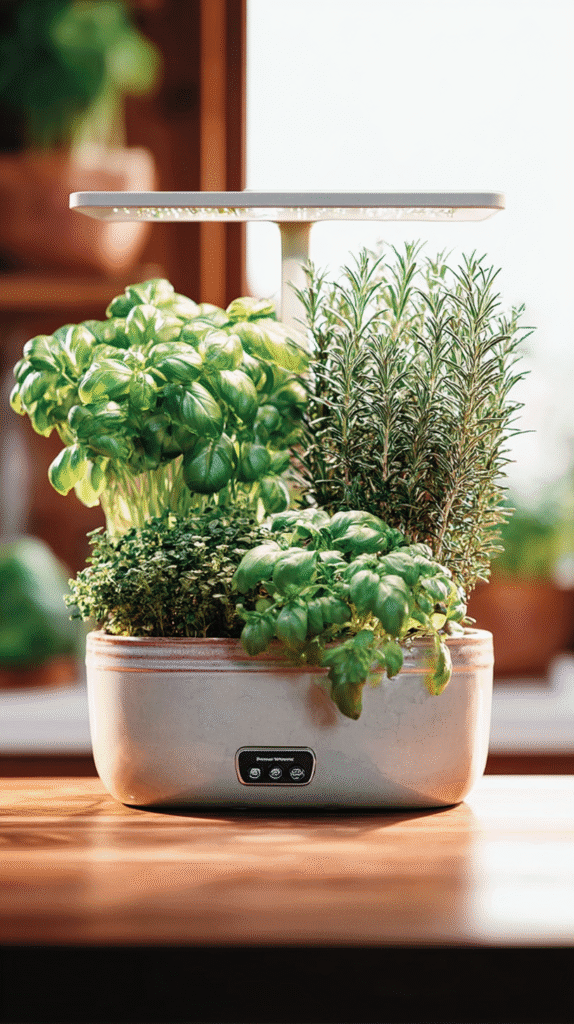
If natural light is limited in your apartment, don’t lose heart. Small countertop herb gardens enhanced by affordable LED grow lights have transformed my dark winter days into abundant harvests.
Consider these steps:
- Choose compact countertop setups that include simple grow lights or add inexpensive LED lights yourself. I love AeroGarden’s indoor growing systems.
- Ideal herbs include cilantro, dill, rosemary, and even basil, which appreciates additional light.
- Set your lights on timers (12–16 hours daily), keeping maintenance minimal.
This reliable method ensures year-round fresh herbs, adding brightness and functionality to any small kitchen.
Want to add some vegetables alongside your herbs? My guide on 5 Best Fall Vegetables to Plant in Containers Now can show you how.
4. Vertical Herb Walls Using Shoe Organizers
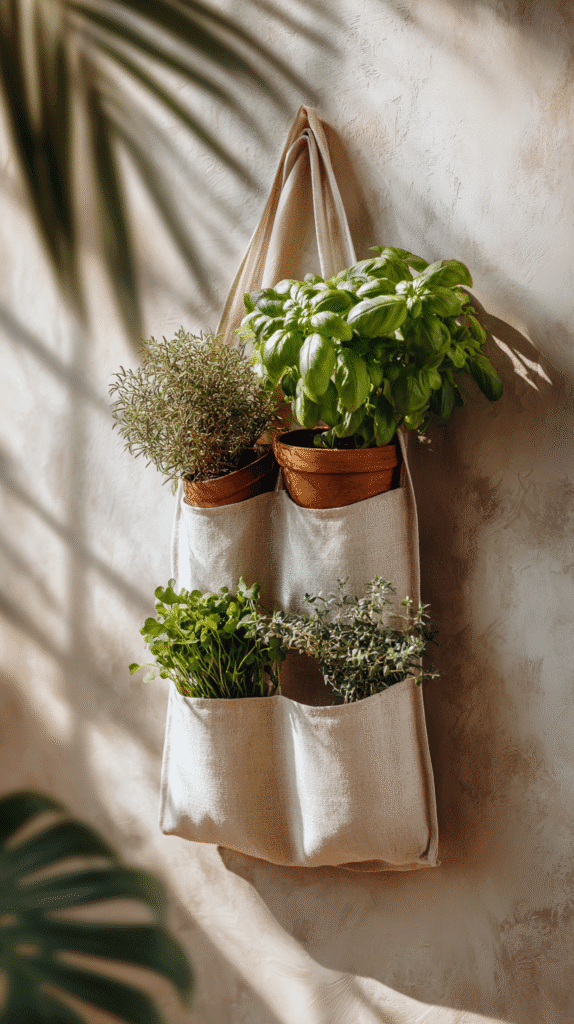
Sometimes, innovative ideas emerge from necessity. Urban gardening communities online introduced me to using hanging shoe organizers as vertical herb walls. This is a brilliant and stylish way to maximize wall space without a major budget or renovations.
Here’s how it works:
- Select a breathable cotton canvas shoe organizer and fill each pocket with quality potting soil.
- Plant compact herbs or salad greens like basil, chives, baby spinach, arugula, or lemon balm.
- Hang your vertical garden in a brightly lit area, ideally near a window with at least partial sun.
Vertical gardens offer abundant productivity and a lush aesthetic. Seeing an entire herb garden thriving on the back of a closet door or an empty wall is empowering and resourceful.
5. Fall-Winter Specific Herb Combos to Grow Indoors
Pairing complementary herbs in themed containers provides purposeful and functional indoor gardens tailored to colder months. Here are my favorite seasonal herb combinations:
- Immunity-Boosting Blend: oregano, thyme, sage. Perfect for adding healthful, robust flavors to winter soups and stews.
- Soothing Tea Garden: lemon balm, mint, chamomile. Soothing herbs for calming teas to unwind during busy evenings.
- Cooking Staples Trio: parsley, rosemary, chives. Essential kitchen herbs enhancing everyday cooking.
These combinations are designed specifically for indoor success, thriving in cooler indoor temperatures and naturally reduced winter pests.
Pair your herbal harvests with preservation tips from my post on How to Preserve Food for Fall in a Tiny Apartment Kitchen.
6. DIY Self-Watering Herb Planters
For busy urban dwellers managing multiple responsibilities, watering plants daily might feel unrealistic. Self-watering planters are an ingenious, low-maintenance solution.
You can create your own self-watering planters easily:
- Recycle glass bottles or plastic containers. Cut them in half to form upper and lower sections.
- Insert a cotton wick or rope from the soil-filled upper half into water-filled lower half.
- Plant moisture-loving herbs like basil, cilantro, or parsley to enjoy consistent growth without stress.
This DIY project reduces daily maintenance demands and makes indoor gardening achievable for even the busiest households.
7. Herb Cuttings and Regrowing from Kitchen Scraps
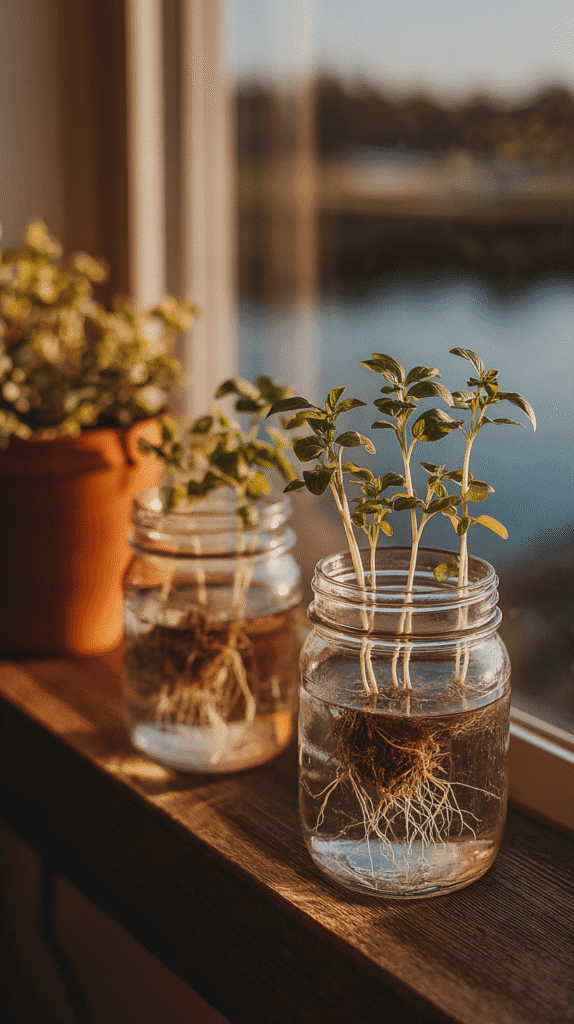
If you’re budget-conscious or simply appreciate resourcefulness, regrowing herbs from kitchen cuttings can feel like magic.
Follow these simple steps to get started:
- Save herb stems from store-bought bunches of basil, mint, or oregano.
- Place cuttings in small jars or cups filled with water, and set on a sunny windowsill.
- Wait for new roots to form, usually within a week, then transplant them into pots filled with soil.
Seeing your kitchen scraps grow into new, thriving herbs is deeply rewarding, reinforcing the satisfaction of self-sufficiency and resourcefulness.
Bonus: Simple Tips for a Thriving Indoor Herb Garden
To ensure your indoor herbs remain healthy and abundant, adopt these straightforward practices:
- Rotate plants weekly for even growth and robust foliage.
- Choose high-quality, well-draining soil formulated for containers.
- Trim your herbs regularly to encourage lush, bushy growth and prevent premature flowering.
- Maintain a simple garden journal or log, noting watering schedules and harvesting dates, to improve consistency and success.
Incorporating these small habits into your routine keeps indoor gardening manageable, enjoyable, and productive all season.
Your Small Space Can Thrive In Any Season
I know from experience that apartment living can sometimes feel limiting, particularly when aspirations of self-sufficiency and connection to nature emerge.
But transforming even a modest kitchen or small apartment space into a thriving indoor herb garden is not only achievable, it’s empowering.
So, this fall and winter, let yourself start small. With each fresh snip from your indoor garden, remember that you’re building more than just culinary convenience, you’re actively nurturing a vibrant, self-sufficient home, even in the smallest of spaces.

